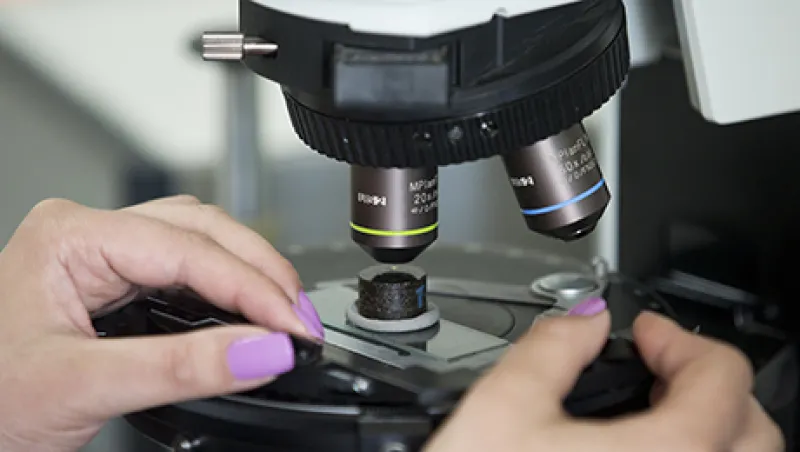Ever since human beings have been able to think, we have thought about finding a nonhuman animal or building a nonhuman machine that can think like we do. We already have machine learning technology strong enough to recognize the most delicate patterns in massive bodies of data and to proceed intelligently, using previous events to understand new ones and to speculate with stunning accuracy about the future. Despite these advances, we’ve never managed to produce a functional model of an intelligence that works just like ours — it turns out that a human brain is unbelievably difficult to make. Perhaps it’s wise, then, that a group of scientists and developers have decided to start their simulation of a living creature much more simply — with an organism so small that its structures and aggregate functioning can be captured in collectively authored computer code that won’t require decades to write.
Enter OpenWorm, a crowdfunded project dreamed up by biologists and programmers to create the first simulated organism. Its mission: “Building the first digital life form. Open source.” OpenWorm is a model of Caenorhabditis elegans, a nematode whose simple body structure has made it incredibly valuable for research purposes ranging from medicine to ecology. C. elegans is the only animal whose cellular map is known in its entirety; biologists have pinpointed the location and function of every one of its cells. That makes it possible — if not exactly easy — to build a model of its cells and then begin to design algorithms that mimic the responses of those cells and their larger systems to stimuli. This is what is called a bottom-up approach to computational modeling. From here, OpenWorm’s plan is to continue to improve its model until the simulated worm’s behavior matches that carefully documented in the project’s video archive: 12,000 videos of real C. elegans specimens living, moving and reacting under various environmental conditions.
OpenWorm represents just the tip of the iceberg for simulated organisms and for the larger field known as executable biology, in which life itself is understood as a spatial and temporal information-processing system. As with all forms of technology, the OpenWorm prototype almost certainly indicates that someone has already thought far beyond this step. Functioning computer models of more complicated living systems — say, a model not of a worm or even a more complex animal but of a human liver or a heart — could be used to test medical regimens over time. The efficacy and side effects of a drug could be assessed at massively high speed on a virtual body that exists only inside a computer, reducing human trials and the risks and expenses involved therein — as well as decreasing the amount of time an experimental drug might take to hit the market and, accordingly, its price point once it got there.
OpenWorm is also important because of the changes in the financing and funding of scientific research that it suggests. Conventional research in the material sciences must be sustained by deep funding sources, rich universities or massive corporations in order to cover the costs of equipment and personnel; human testing is magnificently expensive as well. Projects like OpenWorm, which exchange a physical laboratory for a programming environment and a set of algorithms, promise to be far more elegant and cost-effective. If OpenWorm leads us into a new era of rapid experimental iteration in virtual environments, the conditions under which knowledge and innovation are produced will continue to spread outward from the halls of research institutes into any corner of the world where a developer might find strong Wi-Fi and a comfortable place to sit.
Implications of a new technology for the biotech and pharmaceuticals sectors have never been greater. Bringing down the time and capital investment in drug discovery and testing could disrupt the existing model of large multinationals with deep pockets and long time horizons. Small pharma start-ups — a seemingly oxymoronic notion today — could proliferate as biology becomes an information technology and as drug discovery and testing start with lines of code and simulated models of a drug and its interaction with other simulated models of living cells and organisms.
OpenWorm’s status as a crowdfunded project, too, is notable, if not surprising given that the science, technology, engineering and math community has embraced Kickstarter and similar platforms once reserved for would-be filmmakers and artists. Science-specific crowdfunding sites such as Experiment, which is backed by Andreessen Horowitz and other high-profile Silicon Valley venture capital firms, and Petridish provide financing for projects outside the academy and private industry in the wake of downturn budget cuts to big science. Experiment claims that 67 percent of principal investigators in laboratories now worry about finding funds; traditional funding models are no longer reliable, and grant writing represents a major time suck for minds who should be innovating, not scrivening. The anti-institutional populism common to the open source community is in evidence all over Experiment and Petridish, as it is on Kickstarter; each insists that individuals have the opportunity to play an important role in scientific inquiry and advancement.
These are all shifts worth tracking. It is likely that OpenWorm and projects like it will continue to thrive and to modify research and experimentation practices over the next five to ten years, including research in artificial intelligence and larger projects such as Blue Brain, which are also attempting to simulate life forms in code. OpenWorm closed its successful crowdfunding campaign weeks ago. The reward for all backers was their own version of the worm, or a “worm sim.” Backers at certain tiers could also gift educational kits to their favorite students or classrooms. Living C. elegans specimens have provided scientists with invaluable knowledge about the fundamentals of biological systems; their digital offspring — the little OpenWorms, visualized as slippery tubes of glowing lights — might do the same for generations of new scientific thinkers far from the old, hermetic centers of learning and research.
Get more on trading and technology.






